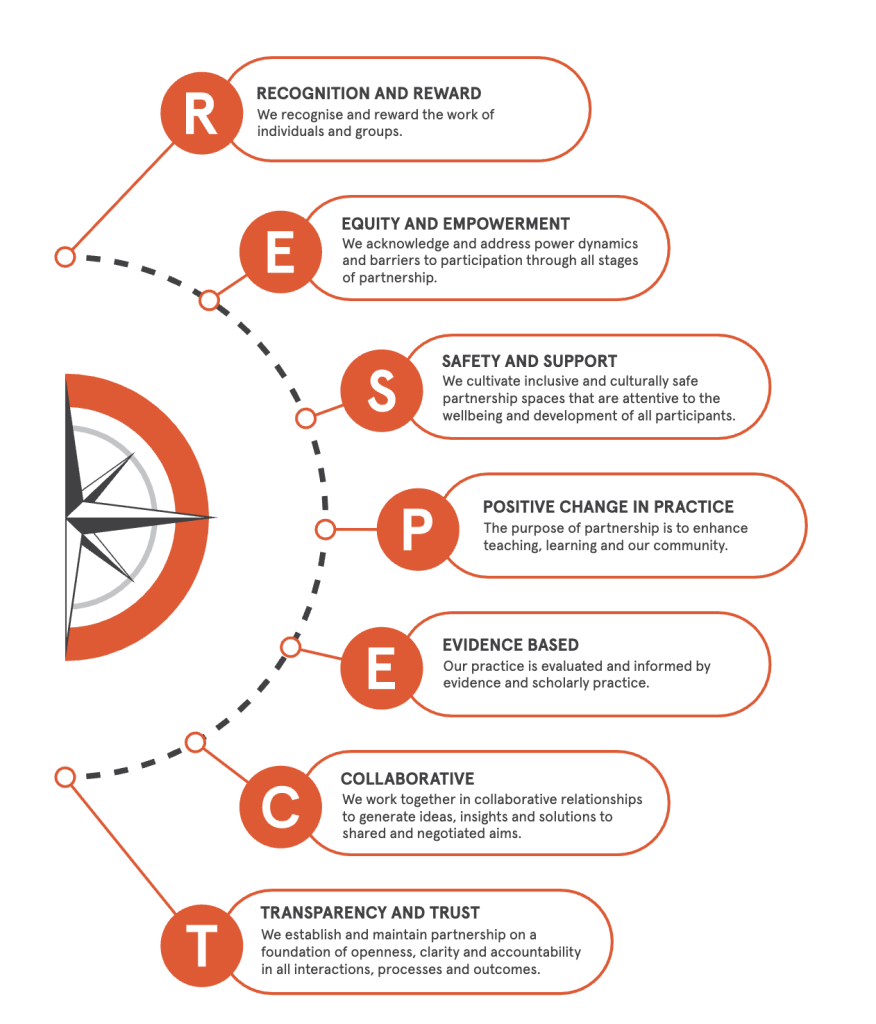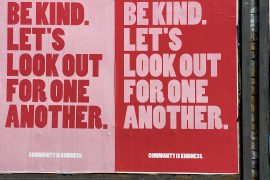Just like the iconic song that spells out RESPECT, successful co-design in education begins with valuing student voices. A recent strategic education project in the Business School found out what respect for student voice means in practice.
In 2024, we invited students to help shape the future of longform writing at the University of Sydney from a business perspective, and this productive partnership continues into 2025.
Benefits of student partnership
We drew on growing evidence and research that supports student partnership. The University of Sydney Student Partnership Charter guided our steps. The charter itself was co-designed with more than 40 students and 40 staff from across the University, reflecting the diverse disciplines, fields, and services that make up our community.
In our business school initiative, we set out to give students meaningful opportunities to apply their skills in real educational projects, working and learning alongside staff. The aim was to expand student participation into an authentic and reciprocal partnership (Mercer-Mapstone et al., 2017). This was quite a different proposition to student representation where selected students speak for their peers in formal committees, with the focus on advocacy and decision-making rather than on shared learning (Matthews & Dollinger, 2023).
Other initiatives, like the AI in Higher Education project, demonstrate the value of student participation in AI research.

Respect starts with recognition and reward
With this research foundation in mind, our Business School project put these principles into practice, starting with fair recognition and reward.
At first, students joined design workshops, focus groups, and surveys, sharing their perspectives on what mattered most. Then two students stepped into paid roles as co-designers and educational testers, collaborating closely with academics to imagine how business education and assessment could evolve in the age of generative AI.
The project balanced recognition and reward for students with a combination of approaches: from voluntary contributions to non-monetary rewards such as gift cards and catering for workshops and focus groups, to paid contracts.
Fair compensation is only fair! And it was the starting point for meaningful collaboration.
Collaborative work
This commitment to valuing student contributions opened the door for meaningful collaboration, and for partnerships with two exceptional students.
Our first partner Letizia Wan was a Business Information Systems student in my class and genuinely excited about the possibilities for generative AI in education. She was already working with Educational Innovation and other educators on Cogniti chatbots, and had even written about them for Teaching@Sydney. Letizia worked with four unit coordinators and Business Co-Design’s educational development team to redesign and implement at longform writing assessments. These innovations have since been featured in Teaching@Sydney case studies such as How AI Chat Agents Enhanced Finance Learning and Teaching Problem-Reframing with GenAI in the Capstone.
Instead of being told what we could and couldn’t do, we’re partners in shaping meaningful learning experiences. I brought in my own perspective and heard directly from educators what their concerns are, which shifted the conversation from what’s allowed, to how can we optimise learning with AI.
Wai Ga Letizia Wan
Advaith Madhav, another Commerce student, joined the longform writing project in 2025. After project briefing, Advaith organised and met with business academics to document practice on open writing assessments. I trusted that Advaith and the academics could discuss generative AI and assessment on their own. Involving a student in guiding interviews and shaping examples added authenticity and showcased a new, collaborative approach.
Advaith also helped facilitate a design workshop, analyse the results, and draft principles and exemplars of current practice. He has written about his experience and the benefits for both staff and students in Taking the plunge together: A student’s journey in co-designing with staff.
When staff allow students to dive in, even when the outcome is uncertain, it signals that their voices are trusted and their contributions matter. That, more than any polished framework, is what builds true collaboration.
Advaith Madhav
The project has been shortlisted for Innovation in Business Education for the 2025 QS Global Reimagine Education Awards. University of Sydney staff can self-enrol in the Canvas site to see the examples.
Positive change in practice needs safety and support
These successful collaborations were made possible by the practical infrastructure that supports student partnership at the University.
As project lead, I was pleasantly surprised to find that the University already had a pool of student partners and friendly, professional support. Educational Innovation’s Senior Program Officer Brodie Nielsen made the process of recruiting and supporting students smooth, proving that education is a village effort that extends far beyond the teacher-student relationship.
This support also provides a safety net for students. If there are any problems in the working relationships, if staff are not attentive to the safety and well-being of student partners, it’s important that students have a point-of-contact that’s outside that relationship.
Transparency, trust, equity and empowerment are entangled
At the same time, I quickly realised that partnership needs more than institutional support. It’s relational work that means sharing power with students and being willing to change your mind (and your decisions).
Power imbalances between staff and students are real and not to be ignored. What mattered most was building trust with clear expectations. I spent a lot of time making sure the project was well organised with clear documentation and processes, and regular communication. We met over Zoom, in-person, and checked in via Teams or email as needed. I was also conscious of the student calendar and being flexible around busy assessment times. I wanted students to feel confident in the project and about their contributions. While working directly with academics felt a bit intimidating for students at first, they came to invest in and value their role.
But power dynamics are not only structural. They also shift depending on the situation, especially when students take on roles as facilitators, advisors, or peer teachers (Omland et al., 2025). I found the same to be true in practice. Sometimes I deliberately stepped back in workshops to create space for other voices. At other times, students found themselves in the position of knowing when to lean in and when to hold back. When students led, they had more agency and were more invested in the project.
Give it a try!
Working closely with students also gave me an unexpected boost in optimism about the future. I personally found it such a positive experience working with student partners Letty and Advaith, and with the many students involved in design workshops and focus groups, that it renewed my hope for positive change, despite the wicked times we live in. After all, these bright, thoughtful people are the business leaders of tomorrow.
Honestly, if you’re teaching and you haven’t tried to partner with students on some level, you’re missing out on a rewarding experience. For curriculum renewal, student partnership makes a lot of sense.
Find out more about student partnership
- Read about Carmen’s student partner Advaith’s experience.
- Read about partnering with students to transform teaching and learning.
If you’re a University of Sydney Staff member:





